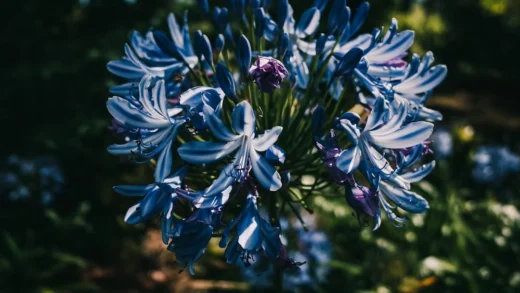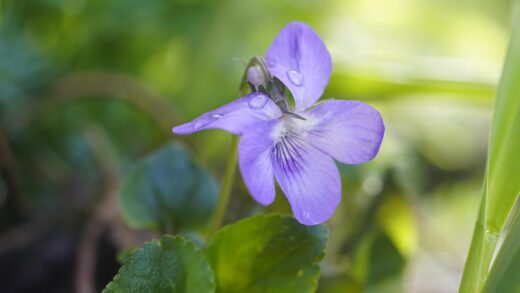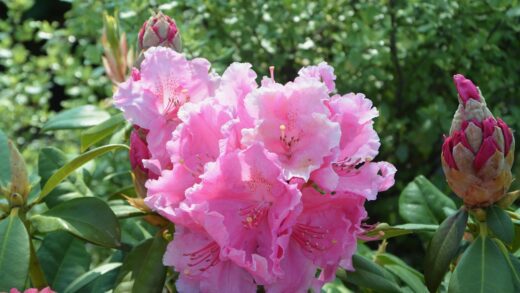The process of planting and propagating coleus is a rewarding endeavor that allows gardeners to multiply their stock of these stunning foliage plants with relative ease. Successful establishment begins with proper planting techniques, which create a foundation for a healthy and vigorous life. Whether starting with young nursery plants or propagating from existing specimens, understanding the specific requirements for soil preparation, spacing, and initial care is critical. Propagation, primarily through stem cuttings, is a remarkably straightforward method that capitalizes on the plant’s natural ability to regenerate, enabling the creation of numerous new plants from a single parent. This ensures a continuous supply of vibrant color for gardens, containers, and indoor displays throughout the seasons.
When planting young coleus purchased from a nursery or garden center, the first step is to carefully select healthy specimens. Look for plants with vibrant, well-colored leaves, sturdy stems, and no visible signs of pests or disease. Avoid plants that appear wilted, leggy, or have yellowing leaves, as these may be stressed and will have a harder time establishing in their new environment. The size of the root ball should be appropriate for the pot, with healthy, white roots visible at the drainage holes, but not so overgrown that the plant is severely root-bound.
Before planting, whether in a garden bed or a container, proper soil preparation is essential. Coleus thrives in rich, well-draining soil, so amending the area with organic matter like compost, aged manure, or peat moss is highly beneficial. This improves soil structure, aeration, and moisture retention. For containers, using a high-quality, sterile potting mix is recommended to ensure good drainage and reduce the risk of soil-borne diseases. The ideal soil pH for coleus is between 6.0 and 7.0, which is slightly acidic to neutral.
The planting process itself should be handled with care to minimize stress on the young plant. Dig a hole that is slightly larger than the root ball and of the same depth. Gently remove the coleus from its nursery pot, being careful not to damage the delicate roots. If the plant is slightly root-bound, gently tease the roots apart to encourage them to grow outwards into the new soil. Place the plant in the hole, ensuring that the top of the root ball is level with the surrounding soil surface. Backfill the hole, firming the soil gently around the base of the plant, and water thoroughly to settle the soil and eliminate air pockets.
Proper spacing is crucial when planting multiple coleus together in a garden bed or a large container. Overcrowding can lead to poor air circulation, which increases the risk of fungal diseases and forces the plants to compete for light, water, and nutrients. Check the plant tag for the specific cultivar’s mature size and space them accordingly, typically allowing between 25 to 45 centimeters (10 to 18 inches) between plants. This spacing ensures that each plant has enough room to develop a full, bushy habit and allows air to move freely, keeping the foliage dry and healthy.
Propagation from stem cuttings
Propagating coleus from stem cuttings is the most common and reliable method for creating new plants. This technique produces clones of the parent plant, ensuring that the unique colors and patterns of a favorite cultivar are perfectly preserved. The process is best performed during the active growing season, from spring to late summer, when the plant has plenty of vigorous, healthy stems. To begin, select a healthy, non-flowering stem and, using a clean, sharp knife or pruning shears, take a cutting that is approximately 10 to 15 centimeters (4 to 6 inches) long. Make the cut just below a leaf node, which is the point on the stem where a leaf emerges.
Once the cutting has been taken, prepare it for rooting by removing the leaves from the lower half of the stem. This is an important step because any leaves left below the surface of the rooting medium (water or soil) will rot, potentially contaminating the cutting and inhibiting root development. Typically, leaving two to four leaves at the top of the cutting is sufficient to allow for photosynthesis, which provides the energy needed for root growth. If the remaining leaves are very large, they can be cut in half horizontally to reduce water loss through transpiration while the cutting is rootless.
Coleus cuttings can be rooted easily in either water or a solid rooting medium. To root in water, simply place the prepared cutting in a glass or jar of clean, room-temperature water, ensuring that the bare nodes on the stem are submerged. Place the container in a location with bright, indirect light. Roots will typically begin to appear within a week or two. It is important to change the water every few days to keep it fresh and oxygenated. Once a healthy network of roots, about 2-3 centimeters long, has developed, the cutting can be carefully transplanted into potting soil.
Alternatively, cuttings can be rooted directly in a moist growing medium such as potting soil, perlite, or vermiculite. After preparing the cutting, it is optional but beneficial to dip the cut end into a rooting hormone powder to encourage faster and more robust root development. Insert the bottom third of the cutting into the prepared medium, gently firming it around the stem for support. Keep the medium consistently moist but not waterlogged, and provide high humidity by covering the pot with a clear plastic bag or placing it in a propagator. New leaf growth is a reliable sign that the cutting has successfully rooted.
Starting coleus from seed
While propagation from cuttings is more common, growing coleus from seed offers the exciting possibility of discovering a wide range of colors and patterns, some of which may be new and unique. Coleus seeds are very fine and require light to germinate, so they should be sown on the surface of the growing medium and not covered with soil. The process is typically started indoors, about 8 to 10 weeks before the last expected frost date, to give the seedlings a head start. A sterile seed-starting mix is the ideal medium, as it is fine-textured and free of pathogens.
To sow the seeds, fill a seed tray or small pots with the pre-moistened seed-starting mix and gently press the seeds onto the surface. After sowing, lightly mist the surface with water to settle the seeds and ensure good contact with the medium. To maintain the high humidity necessary for germination, cover the tray with a clear plastic dome or plastic wrap. Place the tray in a warm location, with an ideal temperature range of 21°C to 24°C (70°F to 75°F). A heat mat can be very effective in maintaining a consistent temperature and speeding up germination.
Germination of coleus seeds can be expected to occur within 7 to 14 days under optimal conditions. During this time, it is crucial to monitor the moisture level of the growing medium, ensuring it remains consistently moist but not saturated. Once the seeds sprout, remove the plastic cover to increase air circulation and prevent damping-off disease, a fungal infection that can be fatal to young seedlings. The seedlings will now require a strong light source, such as a south-facing window or, ideally, fluorescent grow lights positioned a few inches above the plants, to prevent them from becoming weak and leggy.
As the seedlings grow and develop their first set of true leaves (the second set of leaves to appear), they can be thinned out to ensure the strongest ones have enough space. Once they have developed two or three sets of true leaves, they are ready to be transplanted into individual small pots. Handle the delicate seedlings by their leaves rather than their fragile stems to avoid causing damage. Continue to grow them in a bright location until they are large enough and all danger of frost has passed, at which point they can be hardened off and planted outdoors.
Transplanting and initial care
Transplanting is a critical stage in the life of a young coleus, whether it is a rooted cutting or a seedling that has outgrown its initial pot. The goal is to move the plant to its new home with minimal stress to its root system. It is best to transplant on a calm, overcast day or in the evening to protect the plant from the shock of intense sun and heat. Water the plant thoroughly an hour or two before transplanting; this ensures the root ball is well-hydrated and holds together better during the move.
When moving a coleus into a garden bed, prepare the planting hole so it is wide enough to accommodate the entire root system without bending or cramping the roots. The depth should be such that the top of the root ball sits flush with the ground level. Gently slide the plant out of its pot, supporting the base, and place it in the center of the hole. Fill the space around the root ball with amended soil, lightly tamping it down to remove air pockets. Avoid planting too deeply, as this can lead to stem rot.
For container gardening, select a pot that is only slightly larger than the current one, typically 2-5 centimeters (1-2 inches) wider in diameter. Using a pot that is too large can lead to the soil staying wet for too long, which increases the risk of root rot. Ensure the new container has adequate drainage holes. Place a layer of fresh, high-quality potting mix in the bottom of the pot, position the plant, and fill in the sides with more mix, firming it gently. Leave about an inch of space at the top of the pot to make watering easier.
After transplanting, the most crucial step is to water the plant thoroughly. This helps to settle the soil around the roots and re-hydrates the plant after the stress of the move. For the first week or two, pay close attention to the plant’s water needs, keeping the soil consistently moist as the roots begin to establish themselves in the new environment. It is also wise to provide some temporary shade or protection from strong winds and direct sun for a few days to help the coleus acclimate without wilting or becoming scorched. Hold off on fertilizing for at least two to three weeks to allow the roots to recover and to avoid burning them.
Creating effective combinations
The versatility of coleus in terms of color, texture, and form makes it an exceptional plant for creating stunning combinations in containers and garden beds. When planning a planting scheme, consider the principles of color theory to achieve a desired effect. For a harmonious look, combine coleus cultivars with analogous colors, such as pairing a chartreuse variety with a deep green or a pink-splashed type with a burgundy one. For a more dynamic and high-impact display, use complementary colors, such as placing a vibrant orange coleus next to one with deep blue or purple tones.
Texture and form are just as important as color in designing with coleus. The size and shape of the leaves vary dramatically between cultivars, from large, broad leaves to finely dissected, frilly ones. Combining different textures adds depth and interest to a planting. For instance, the bold, large leaves of a ‘Kong’ series coleus can be a stunning focal point when contrasted with the delicate, lacy foliage of a fern or the fine blades of an ornamental grass. Similarly, pairing an upright, bushy coleus with a trailing variety creates a layered effect, with the trailing plant spilling over the edge of a container or wall.
When selecting companion plants to grow alongside coleus, it is essential to choose species with similar cultural requirements. Plants that thrive in similar light, water, and soil conditions will be the most successful partners. For shady or partial-shade locations, coleus pairs beautifully with impatiens, begonias, fuchsias, and caladiums. In sunnier spots, sun-tolerant coleus varieties can be combined with plants like sweet potato vine (Ipomoea batatas), lantana, petunias, or verbena. This ensures that all plants in the arrangement will thrive together without one outcompeting the others.
The habit of the coleus itself—whether it is upright, mounding, or trailing—should guide its placement within a combination planting. Use the “thriller, filler, spiller” concept for container design: an upright coleus can serve as the tall, eye-catching “thriller” in the center. Mounding varieties are perfect “fillers,” adding mass and color to the middle ground. Trailing types of coleus are excellent “spillers,” softening the edges of the pot as they cascade over the sides. This thoughtful arrangement creates a balanced and professional-looking composition that highlights the best attributes of each plant.



















